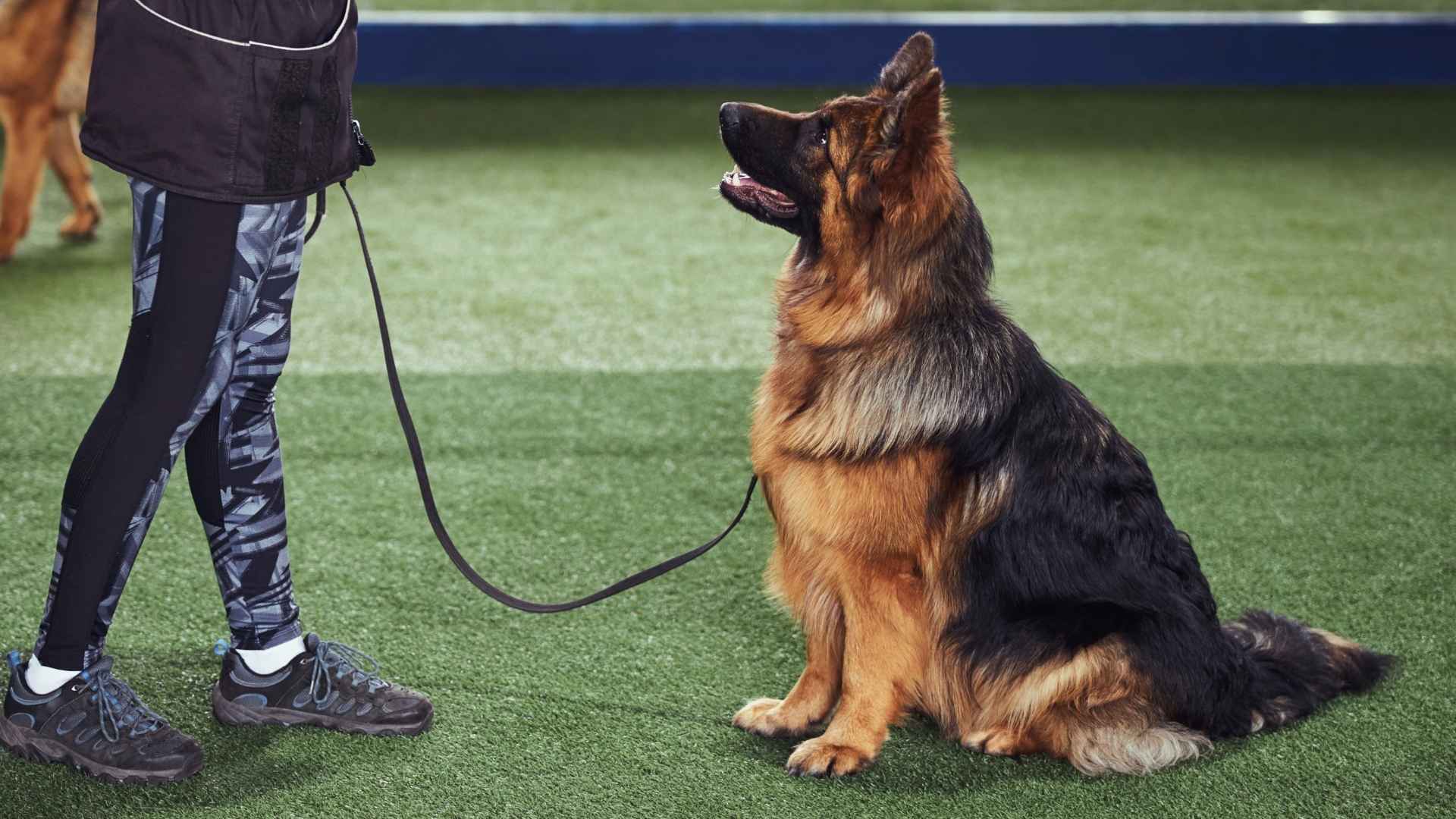There’s something undeniably majestic about large dog breeds; their size, strength, and presence bring an unmatched energy to any home. But with that big personality often comes a big need for mental and physical engagement. These high-focus large dogs aren’t content with just lounging around; they crave activity, direction, and a sense of purpose. For the right owner, they make incredibly rewarding companions.
Before bringing home one of these intelligent giants, it’s important to understand their unique needs. Many of these breeds thrive on structure, consistent training, and daily stimulation. Whether it’s through advanced obedience, agility, or working tasks, high-focus large breeds shine when given challenges that tap into their instincts and intelligence.
Owning one of these dogs is a long-term commitment, not just in terms of time and energy, but also financially. A dog’s lifetime care can exceed $15,000, covering essentials like vet visits, grooming, and food. If you’re prepared to meet the demands, these breeds can offer a deeply fulfilling and loyal bond.
High Focus Large Dog Breeds
1. Labrador Retriever
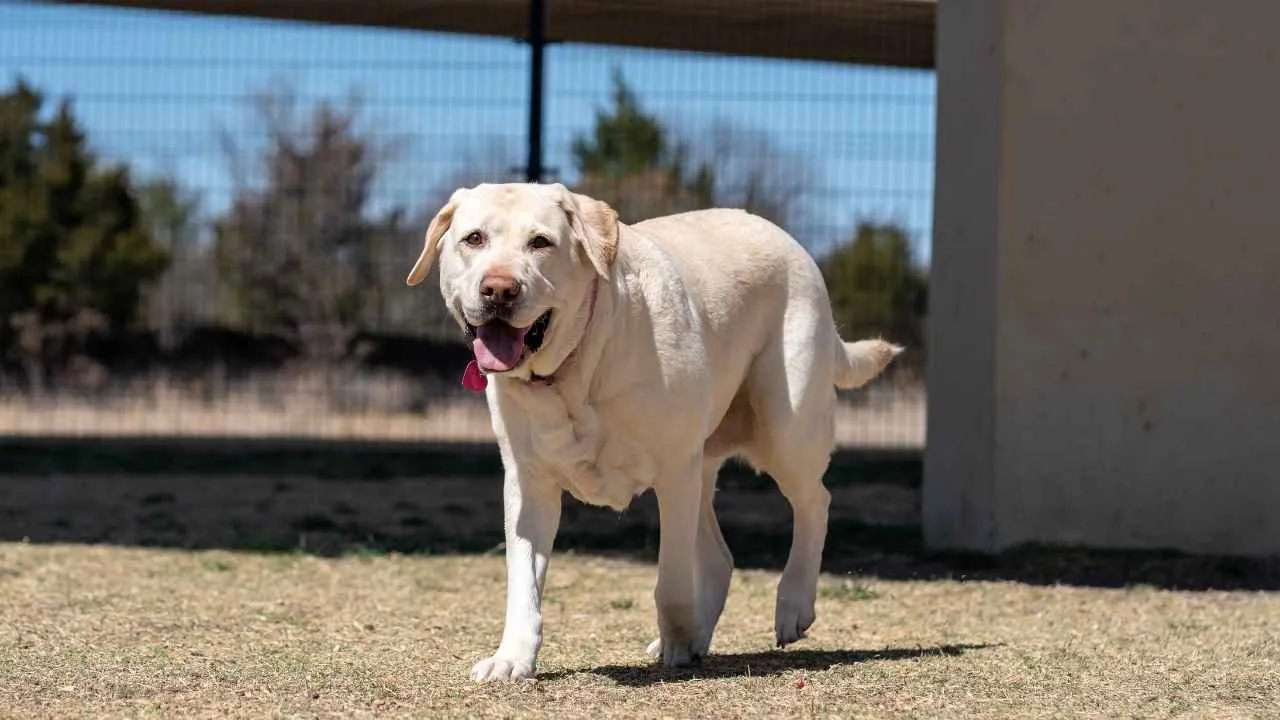
Labrador Retrievers are the quintessential high-focus large breed, revered for their unmatched versatility and trainability. Originally bred to assist fishermen in retrieving nets and fish, these dogs have evolved into dependable service animals, excelling in roles like drug detection, search and rescue, and guide work.
PetMD reports that the Labrador Retriever is among the most popular dog breeds in the U.S. Thanks to their active, friendly nature, these medium- to large-sized sporting dogs make excellent family companions. Their eagerness to please, paired with keen intelligence, makes them quick learners, especially when motivated by food rewards.
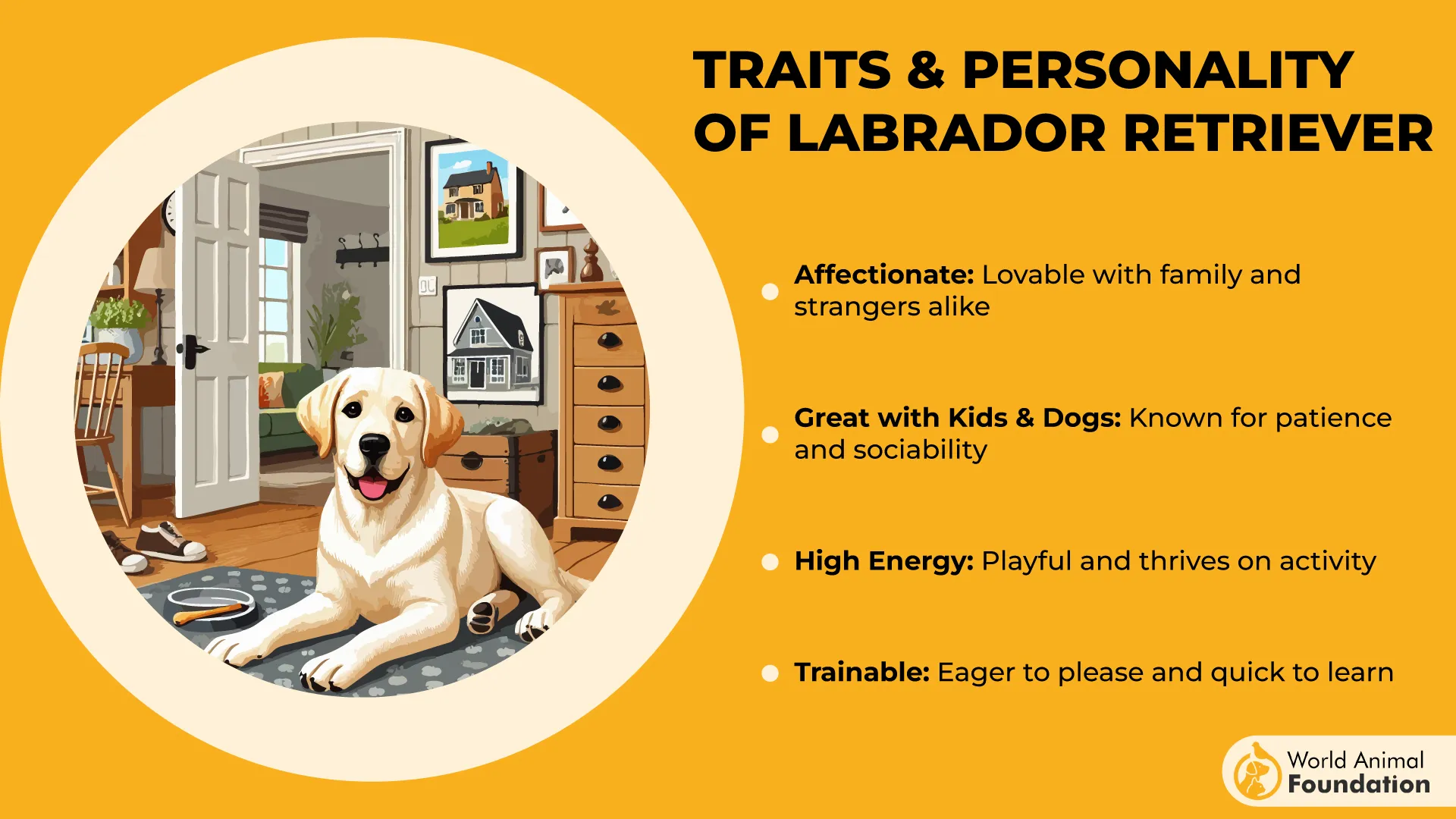
Labs possess a calm temperament and patient demeanor, which, coupled with their athletic build and high energy levels, create an ideal candidate for intensive training and active households.
Care Needs
Despite their easy-going charm, these friendly dogs demand a structured care routine. They thrive on exercise, ideally needing a couple of hours of activity daily to prevent boredom and weight gain. Off-leash runs and interactive games are perfect for channeling their abundant energy.
Labs are also prone to obesity, so portion control is essential. Regular grooming and vet checkups are vital for maintaining their robust health. Dental care, especially brushing, ensures their characteristic grin remains clean and fresh.
Fun Fact: The world’s first diabetic alert dog was a Labrador named Armstrong!
2. Golden Retriever
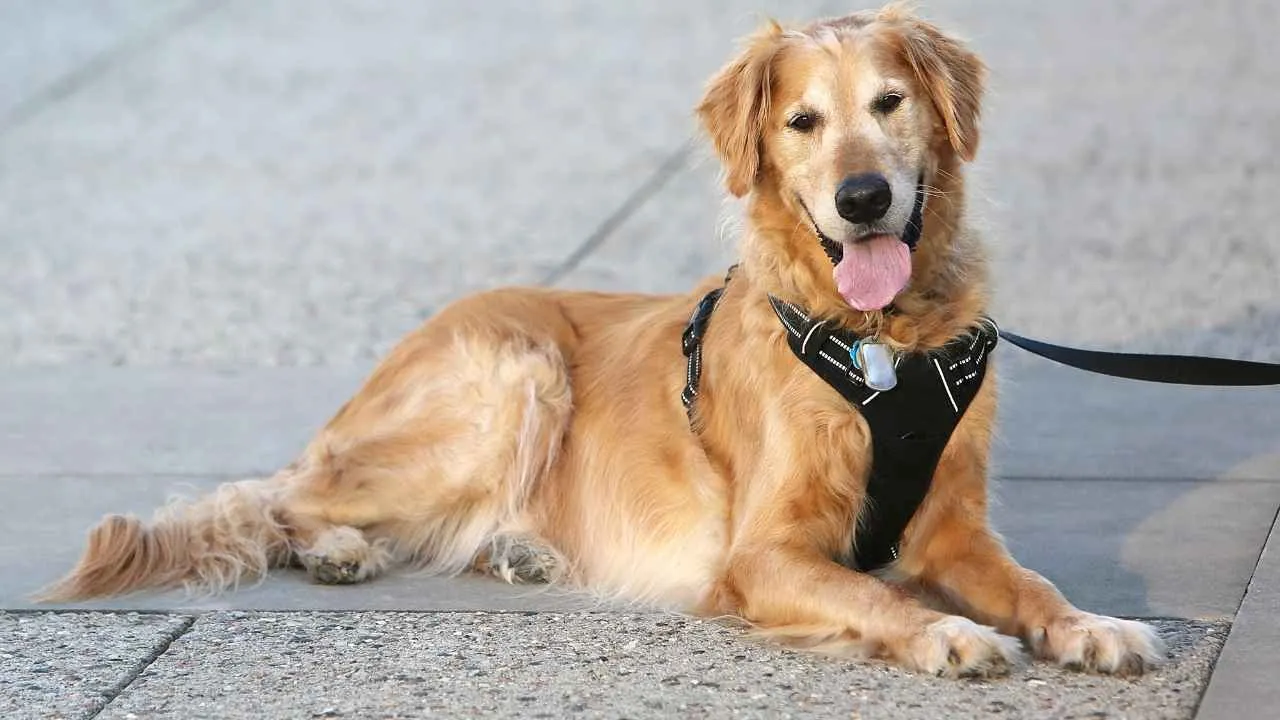
Golden Retrievers are one of the most popular large breeds, known for their gentle temperament. Bred originally for retrieving game, they are eager learners who excel in obedience and service work. PDSA states that Golden Retrievers are intelligent and can become bored without enough mental stimulation, so it’s important to keep both their minds and bodies active.
Whether playing fetch or navigating complex commands, Golden Retrievers stay engaged and responsive, making them ideal for active families ready to invest time in training and enrichment.
Care Needs
This giant dog breed requires a balanced routine to thrive. Regular exercise, such as daily walks and swimming, keeps them physically fit, while interactive training satisfies their mental stimulation needs. As they are food-motivated, owners must watch their calorie intake to avoid obesity.
Grooming is moderate but consistent, due to their thick, water-resistant coats. Frequent vet checkups and vaccinations help maintain their long-term health, and they should never be left alone for extended periods due to their social nature.
Fact: Golden Retrievers are commonly chosen as guide dogs because they are large enough to lead while remaining compact enough for public spaces.
3. German Shepherd
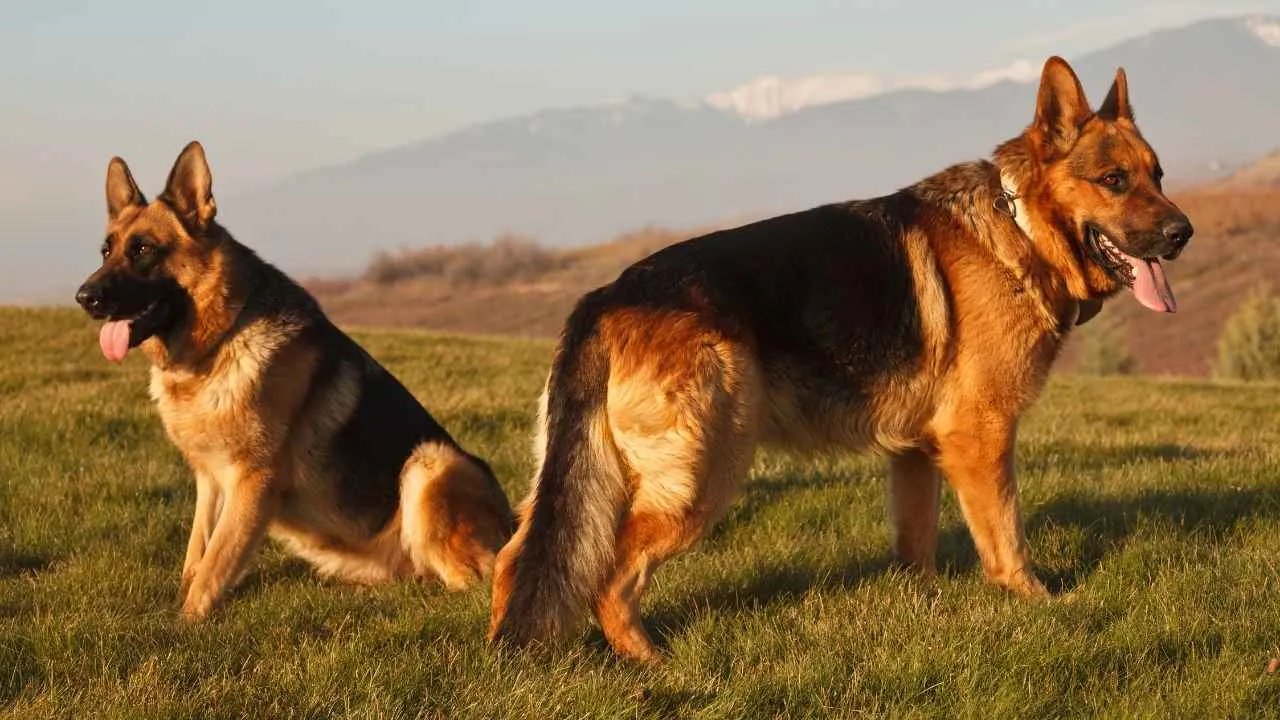
Revered for their intelligence and unwavering loyalty, these dogs excel in roles that demand concentration. Their natural alertness and quick-learning nature make them one of the most trainable and disciplined breeds in the dog world.
German Shepherds are highly responsive to commands and thrive when given both mental and physical tasks, showcasing why they’re a staple in professional canine teams across the globe.
Care Needs
German Shepherds require regular mental and physical stimulation to prevent boredom-related behavior issues. Daily exercise, such as long walks or interactive play, is essential to maintain their health and happiness. Early socialization and consistent training help them grow into well-balanced companions.
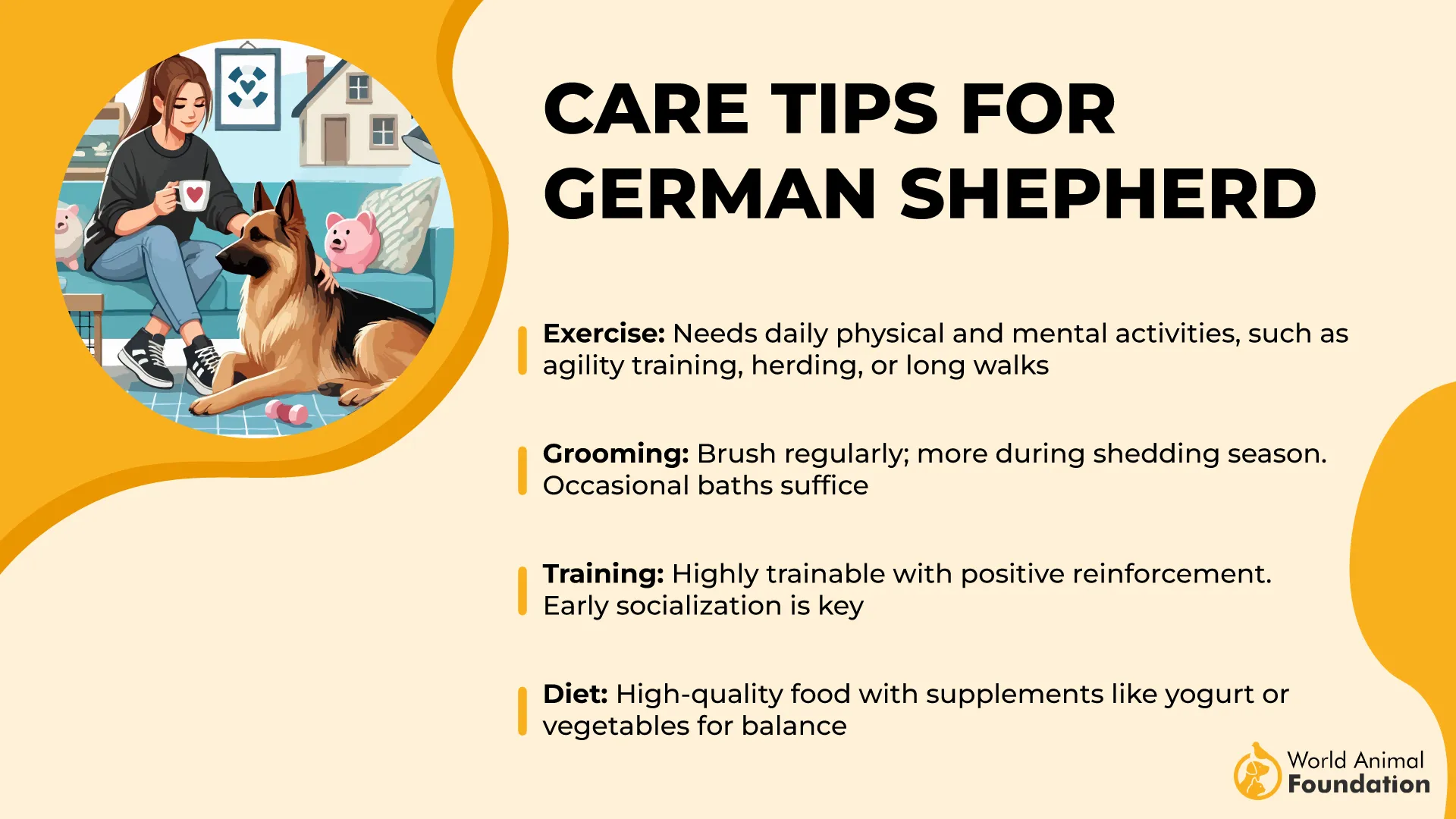
Their dense double coat demands routine brushing, especially during peak shedding seasons in spring and fall. As large dogs weighing between 65–95 pounds and standing 22–26 inches tall, they also benefit from joint-friendly diets and regular veterinary care.
Fun Fact: German Shepherds are commonly referred to as Alsatians in some regions and are among the top working dogs globally due to their trainability and intelligence.
4. Belgian Malinois
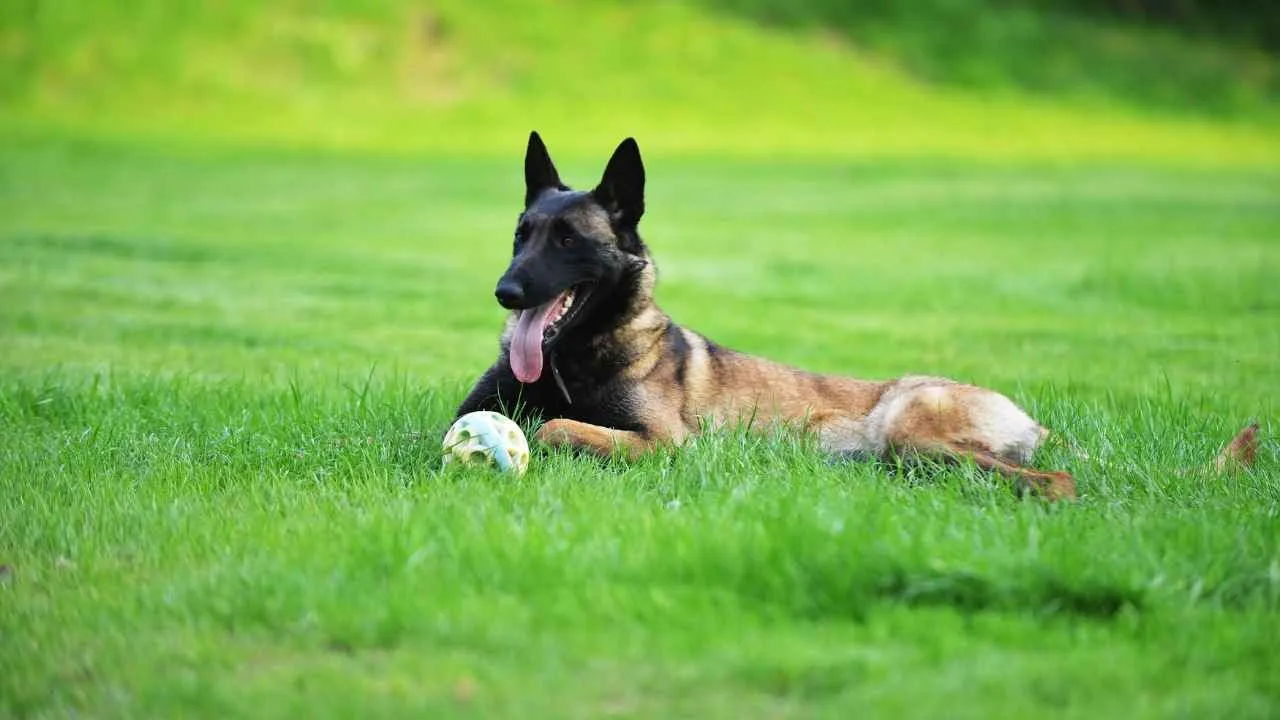
This agile, sharp-minded dog thrives when given a purpose and performs best in working roles. Known for their intensity and boundless energy, Malinois need both mental and physical challenges to stay happy and balanced.
They have a strong drive and workaholic nature, which can be overwhelming for novice owners. Unlike more laid-back breeds, the Mal is constantly alert, making them ideal for active households or experienced handlers ready to invest serious time into training and exercise.
Care Needs
This high-energy dog breed requires significantly more daily exercise than average dogs. Purina reports that this breed requires over two hours of daily exercise along with training and mental challenges, such as work or dog sports, making it a demanding companion and not ideally suited for those seeking a low-key pet.
A short walk won’t cut it, think intense physical activity like running or agility training. Secure, tall fencing is essential due to their chase instincts. Grooming is low-maintenance thanks to their short, weather-resistant coat. Weekly brushing suffices, but shedding intensifies during seasonal changes, requiring more frequent upkeep. Baths are needed only when dirty to prevent skin dryness.
Fact: Despite often being confused with German Shepherds, Belgian Malinois are leaner, more agile, and often described as the “sports car” of the canine world.
5. Doberman Pinscher
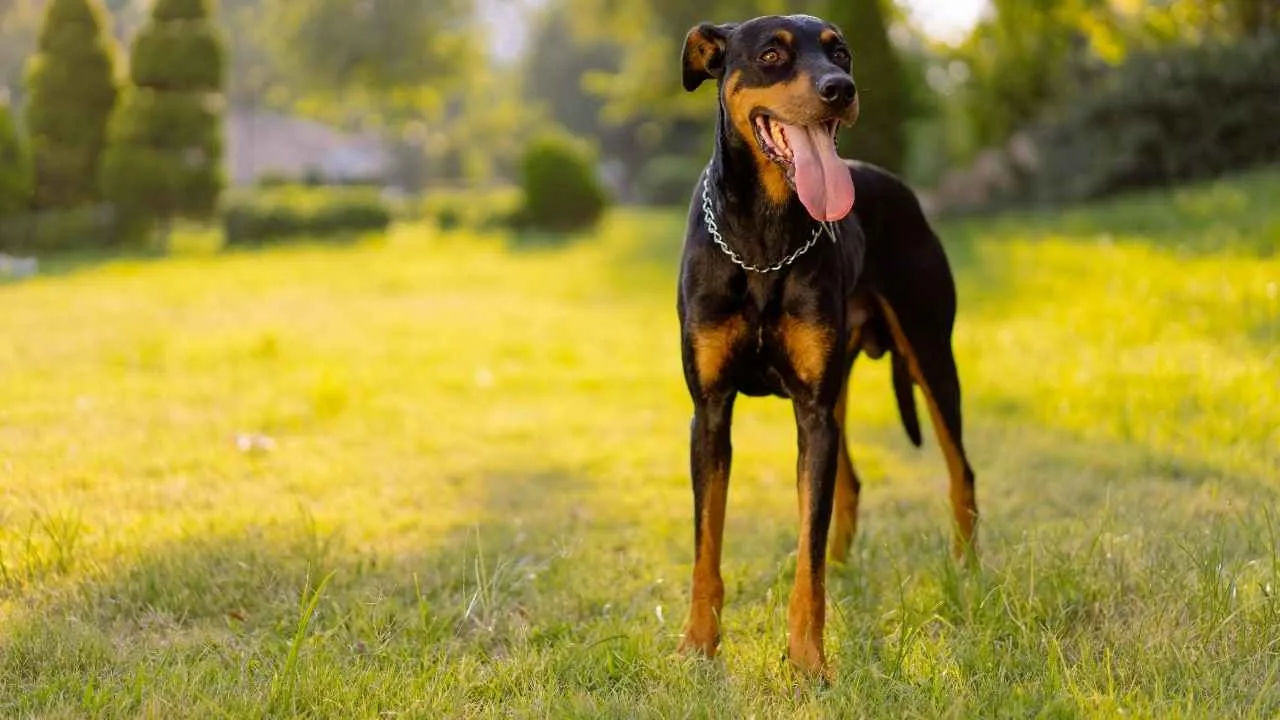
Originally bred by German tax collector Louis Dobermann in the 19th century for personal protection, these dogs possess incredible loyalty and attentiveness. Their muscular, athletic build complements their alert nature.
Quick learners with a strong desire to please, Dobies excel in obedience training and structured routines. Their focused demeanor means they’re not only protective but also highly responsive to their handlers, provided they are given consistent mental and physical stimulation.
Care Needs
Dobermans thrive on a balanced diet tailored to their age, weight, and activity level. WebMD notes that Doberman Pinschers are smart and active dogs that require regular playtime and physical activity to stay engaged.
Taking them on daily walks, hikes, or allowing them to run in a secure park helps keep them in top shape. It’s crucial to consult a veterinarian or canine nutritionist for guidance. While treats are useful for training, overuse can lead to obesity, so moderation is key. Regular access to clean, fresh water is essential.
These dogs require high-quality dog food and portion control to maintain their lean build and stamina. Routine health checks help catch genetic issues common to the breed, such as heart conditions or hip dysplasia.
Fact: Male Dobermans typically stand 26–28 inches tall and weigh 75–100 pounds, while females range from 24–26 inches and 60–90 pounds.
6. Weimaraner
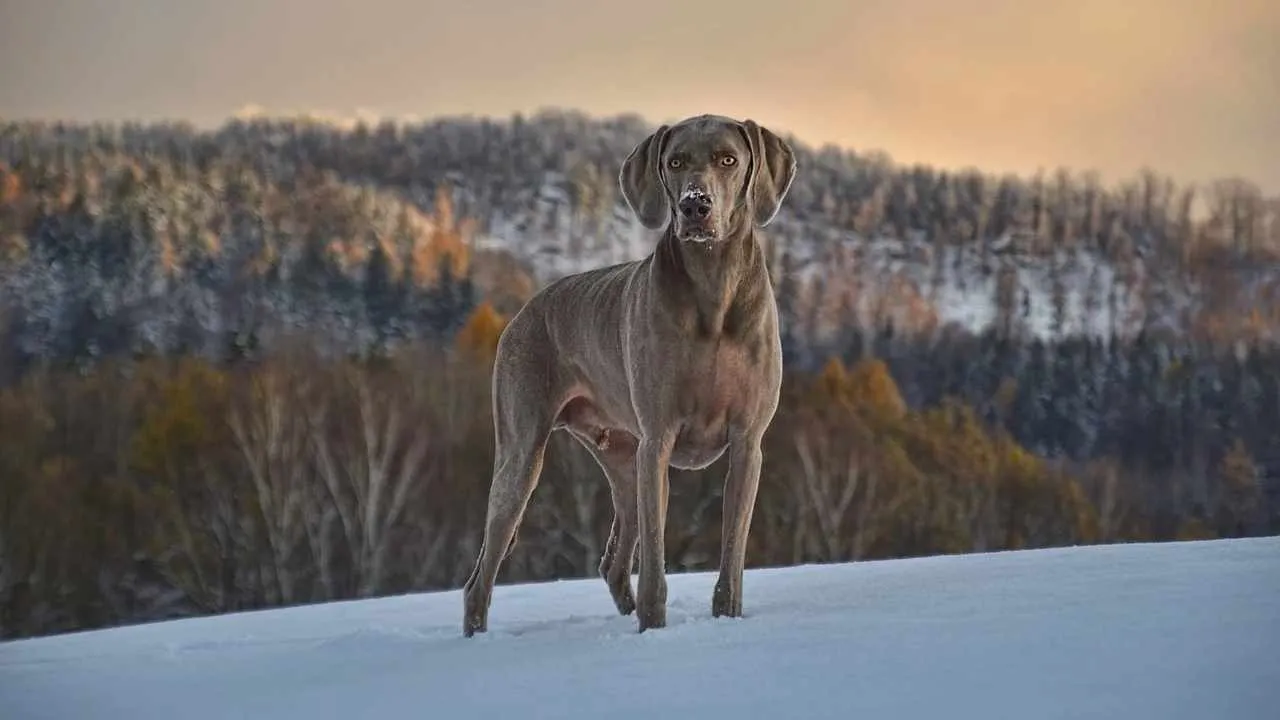
Weimaraners are the epitome of high-focus working dogs, originally bred for hunting large game in Germany. Their sleek silver-gray coats and alert expressions are matched by sharp intelligence and an energetic spirit. This dog tends to have a purpose, whether it’s long hikes, agility courses, or scent work.
Left unstimulated, a Weimaraner may turn to chewing, digging, or barking to cope with boredom. They form close bonds with their humans and don’t tolerate being left alone for extended periods, often becoming anxious or restless. Their dedication and desire to work make them ideal companions for active owners who enjoy structured outdoor time.
Care Needs
These energetic dogs require at least 40 minutes of vigorous exercise daily to stay physically and mentally balanced. A large, secure backyard is essential, as their strong prey drive might tempt them to wander. Because of their sensitivity, they respond best to positive reinforcement training. These dogs aren’t suited for apartments or sedentary households.
They thrive in rural or semi-rural settings, ideally with owners who have experience with gundogs or working breeds. Engaging them in purposeful activities like retrieving, hiking, or even dog sports helps keep their minds sharp and behavior in check.
Fact: These high-energy dogs were once exclusive to German nobility and originally bred to hunt big game.
7. Rhodesian Ridgeback
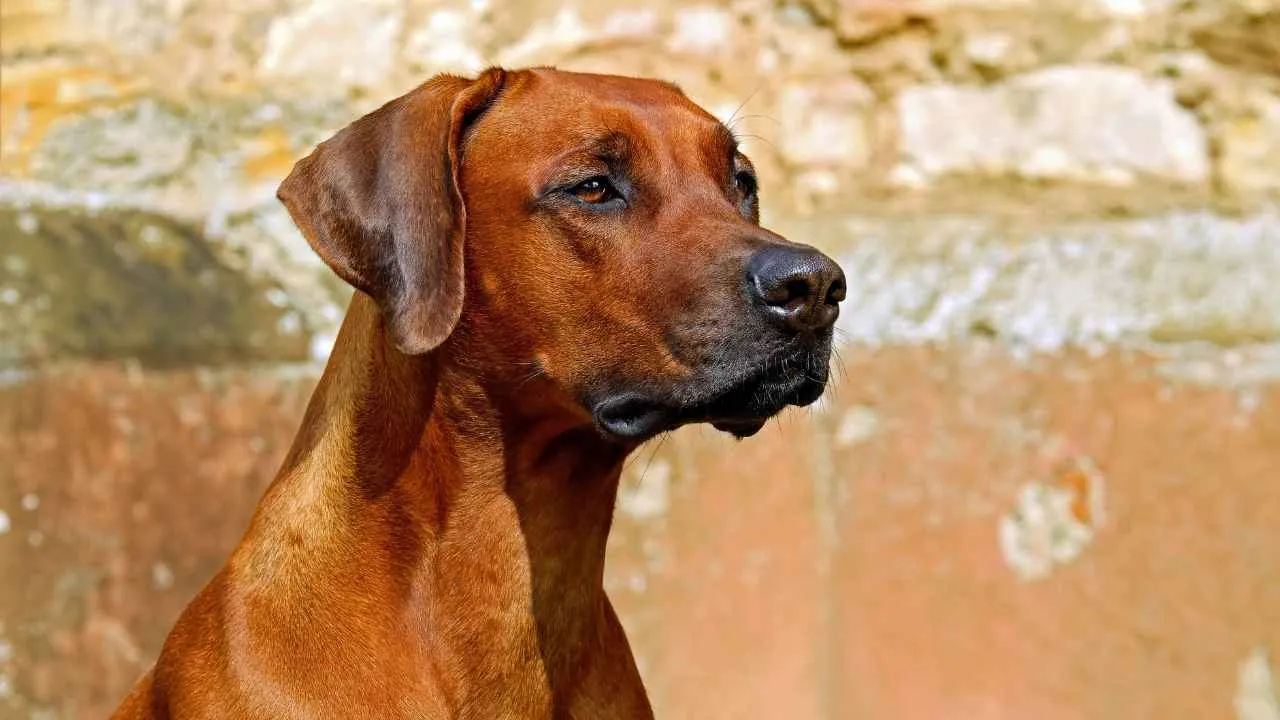
They have a heritage rooted in endurance and alertness. Originally bred in South Africa for hunting and guarding, these dogs are quick thinkers with impressive strength and agility. Despite their athletic prowess, they carry themselves with dignified composure and require mentally stimulating activities to stay engaged.
Ridgebacks are intelligent but independent, often weighing decisions before responding, which makes training both a challenge and a rewarding journey for experienced owners. Their reserved nature does not hinder loyalty; they form deep bonds with their families and act as devoted protectors.
Care Needs
These intelligent dogs have moderate grooming needs thanks to their short coat, but their high activity level calls for ample daily exercise and structured mental enrichment. They thrive best in spacious homes with active families who understand their need for both physical exertion and calm companionship.
Fun Fact: The breed’s signature feature is the ridge of hair along its spine, growing in the opposite direction of the rest of the coat.
Conclusion
Choosing a high-focus large dog breed means welcoming a companion with intelligence, drive, and an eagerness to engage. These breeds are more than just their size; they thrive on meaningful interaction, structured training, and having a purpose. Whether guarding a home, mastering agility, or enjoying long hikes, these dogs excel in environments where their mental sharpness is appreciated and nurtured. Their affectionate nature often surprises those who assume big dogs can’t be gentle or loyal family members.
If you’re considering a breed like the Border Collie or Australian Cattle Dog, be prepared to provide not only physical outlets but also consistent challenges that match their intense focus. Even breeds with more mellow appearances, like the Bernese Mountain Dog, often possess deep intelligence and work ethics. Many of these breeds, such as sled dogs, also require time to bond with their humans, often showing keen awareness of how they fit into their household alongside other dogs.


